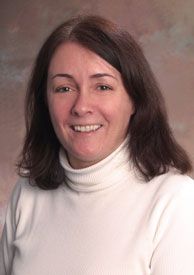Experts Highlight Benefits and Challenges With Biosimilars in Breast Cancer
Ruth O’Regan, MD, and Adam M. Brufsky, MD, PhD, FACP, both discuss the emergence of trastuzumab biosimilars in breast cancer.
Ruth O'Regan, MD, a professor of medicine, Hematology/Oncology Division, at University of Wisconsin School of Medicine and Public Health and Carbone Cancer Center

Ruth O'Regan, MD
FDA-approved trastuzumab (Herceptin) biosimilars are expected to decrease the financial toxicity of breast cancer treatment, according to shared perspectives by Ruth O'Regan, MD, and Adam M. Brufsky, MD, PhD, FACP.
Currently, there are 5 trastuzumab biosimilars approved by the FDA: MYL-1401O (Ogivri; trastuzumab-dkst), CT-P6 (Herzuma; trastuzumab-pkrb), SB3 (Ontruzant; trastuzumab-dttb), PF-05280014 (Trazimera; trastuzumab-qyyp), and ABP 980 (Kanjinti; trastuzumab-anns).
Beyond the cost-savings factor, there are other aspects of biosimilars overall that need to be further understood, such as their clinical development.
“Because of the rules about biosimilars, they have to be considered the same [as the originator],” said Brufsky, a professor of medicine, associate chief, Division of Hematology/Oncology, co-director, Comprehensive Breast Cancer Center, associate director, Clinical Investigation, University of Pittsburgh Medical Center Hillman Cancer Center. “There's a very specific FDA process for developing a biosimilar. They have to be biologically similar, but there are probably going to be some subtle differences between them.”
In an interview with OncLive, O’Regan, a professor of medicine, Hematology/Oncology Division, at University of Wisconsin School of Medicine and Public Health and Carbone Cancer Center, and Brufsky both discussed the emergence of trastuzumab biosimilars in breast cancer.
OncLive: How are biosimilars going to address financial toxicity in breast cancer?
O’Regan: Anything that reduces the cost of drugs is clearly beneficial to everybody—particularly the patients. I'm in favor of using them, though as biosimilars become more common, I'm not sure how much of a choice we will have as physicians. Payers are probably going to want us to use a biosimilar if it is [less expensive]. The data are very convincing that in terms of efficacy and toxicity, [biosimilars] are very similar to the parent drugs; I expect that we are going to see more use of them. We have started to use biosimilars for growth factors for years without any problems.
Brufsky: The [biosimilars] will be differentiated by availability and cost. There are 5 independent [biosimilar] drugs, and it is going to be hard to pick [which biosimilar to use] at the end of the day. It's going to depend on what kind of deal the payer or the health system gets. Some of these companies make multiple oncologic products. Perhaps they will bundle their [biosimilar] drug with another one of their oncologic products for a deal or discount. It's going to be a financial thing, not a medical thing, at this point in time.
Why is there hesitation or resistance to using biosimilars?
O’Regan: It might be hard for a patient, particularly somebody who has metastatic breast cancer who has been on trastuzumab with stable disease for years, to switch to a biosimilar. They might be concerned it might not be as effective, even though the trials suggest that [biosimilars] are, indeed, just as effective. That could be a challenge.
Brufsky: [Biosimilars] are complex molecules. This is an area where the original [product] works so well and has changed the standard of care, as well as the natural history of disease. You don't want to mess with success.
What advice do you have for physicians to get more familiar with biosimilars as they begin to impact clinical practice?
O’Regan: The key thing is going to be patient education. Be ready to answer patient questions. They are going to want to know what biosimilars are and if they are as effective [as the original drug]. We are planning to develop a patient education packet about [biosimilars] so that patients can read about [biosimilars] on their own. [Suggesting biosimilars] is going to be less of a challenge for new patients that come in who have not previously had treatment. However, for patients with HER2-positive metastatic breast cancer who are just doing fine at 5 years, it might be a hard sell for them. We have to be prepared to address that and, if they feel very strongly, see if there's a way that we can keep [those patients] on the [reference] compound.
Brufsky: Learn as much as you can with it. Get as comfortable as you can with [biosimilars]. It took me a bit, but I'm comfortable with [using biosimilars] now. Once you understand the regulation behind biosimilars, you really understand that they have to be the same [as the original drug]. They're not allowed to be different. With some generics, patients complain they are a little bit different. We may see that with [biosimilars], too, but [we need to] have an open mind.



